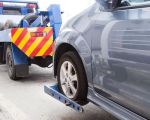- understanding-the-challenges-of-highway-fuel-shortages
- first-reactions-and-safe-behavior-when-out-of-gas
- ways-to-get-emergency-fuel-on-the-highway
- stories-from-the-road-real-emergency-fuel-experiences
- how-to-choose-the-right-emergency-fuel-delivery-service
- proactive-tips-to-avoid-highway-fuel-emergencies
1. Understanding the Challenges of Highway Fuel Shortages
Few situations make drivers feel more vulnerable than realizing they're out of gas on the highway. If you’re wondering how to get emergency fuel when stranded on the highway, you’re definitely not alone—fuel shortages are a common, if embarrassing, roadside issue. Long stretches without service stations, inaccurate dashboard readings, or even simple distractions can all lead to that dreaded moment when your car sputters to a stop.
The modern highway system, while efficient for travel, can leave you isolated fast. Factors like heavy traffic, inclement weather, or nighttime conditions only add to the urgency and stress. Understanding these challenges is crucial, as they inform the best strategies for getting help and staying safe while you wait.

Fuel 4
720 Tonnelle Ave, Jersey City, NJ 07307, USA
2. First Reactions and Safe Behavior When Out of Gas
Your first priority when you run out of gas on the highway is safety—yours and your passengers’. Don’t panic. Instead, guide your vehicle as far off the road as possible, ideally onto the shoulder or a designated emergency pull-off area. Turn on your hazard lights immediately to alert other drivers.
Once safely stopped, stay inside the vehicle if it’s in a dangerous or high-traffic area. If you must exit (for example, if you’re in an unsafe position), do so with extreme caution and move away from traffic. Reflective vests or emergency triangles from your car kit can make you more visible, especially at night or in poor weather.
Take a moment to assess your surroundings before making calls or attempting to resolve the situation. Safety should always come before embarrassment or frustration.

Nearest gas station
353 Smithtown Blvd, Ronkonkoma, NY 11779, USA
3. Ways to Get Emergency Fuel on the Highway
So, how do you actually get emergency fuel when stranded on the highway? In the past, the only options were to walk to the nearest gas station (often risky or impractical) or hope a passing motorist could help. Thankfully, today’s drivers have safer, faster solutions.
Most roadside assistance providers, including those featured by Rescue & Towing, offer emergency fuel delivery as a standard service. With one call or a few taps on your phone, a professional can bring fuel directly to your location, often within 30–60 minutes. This service is not only fast but ensures the fuel is handled safely and that your car is restarted correctly.
For those who have a roadside assistance membership, use the official app or phone number to request fuel. If you don’t, search for local emergency fuel delivery services—many now serve highways and remote areas. Avoid relying on strangers for help, especially at night, to reduce risks. The peace of mind that comes from knowing help is on the way is invaluable, particularly if you’re traveling with family or in harsh weather.
4. Stories from the Road: Real Emergency Fuel Experiences
To really understand the value of reliable fuel rescue, consider some recent real-world experiences. In 2023, a viral social media post recounted the story of a young couple stranded late at night on a rural stretch of interstate in Texas. Their car ran out of fuel 20 miles from the nearest gas station, and with no cell service, they were left waiting hours until a patrolling officer found them. The experience was harrowing but reinforced the lesson: always have a plan for emergency fuel situations.
Another case involved a delivery driver in Chicago whose car ran out of gas during a snowstorm. Fortunately, he was able to use a mobile roadside assistance app to request emergency fuel delivery. Within 45 minutes, a Rescue & Towing-recommended partner had him back on the road. These stories underscore how unpredictable highway fuel shortages can be—and why preparation and trusted services matter.
5. How to Choose the Right Emergency Fuel Delivery Service
When choosing an emergency fuel delivery provider, speed and professionalism are crucial. Look for services with strong local reputations and positive customer feedback. Make sure they offer 24/7 support—after all, highway emergencies rarely happen at convenient times.
Companies highlighted by Rescue & Towing are chosen for their reliability, transparent pricing, and prompt response. Before you need help, save their contact information in your phone. When calling, be prepared to share your exact location (mile markers, exits, or GPS coordinates help a lot), your vehicle’s details, and the type of fuel required.
A good provider doesn’t just deliver fuel—they also check your car for other potential issues, ensuring your safety before you hit the road again. This level of service can transform a stressful roadside event into a manageable detour.
6. Proactive Tips to Avoid Highway Fuel Emergencies
Of course, the best way to handle running out of gas is to avoid it entirely. Always top off your tank before long trips, especially when traveling through rural or unfamiliar areas. Keep an eye on your dashboard gauges and remember that fuel range estimators can be less reliable in bad weather or hilly terrain.
Carrying a portable, approved gas can (empty, for safety) in your trunk can be a lifesaver if you’re comfortable using it. Make it a habit to program emergency contacts and local roadside assistance numbers into your phone before heading out.
Platforms like Rescue & Towing make it easy to find and contact dependable emergency fuel delivery services wherever you travel. With a little preparation and the right resources, you can turn an unexpected fuel emergency into a story worth telling—not a disaster.






























